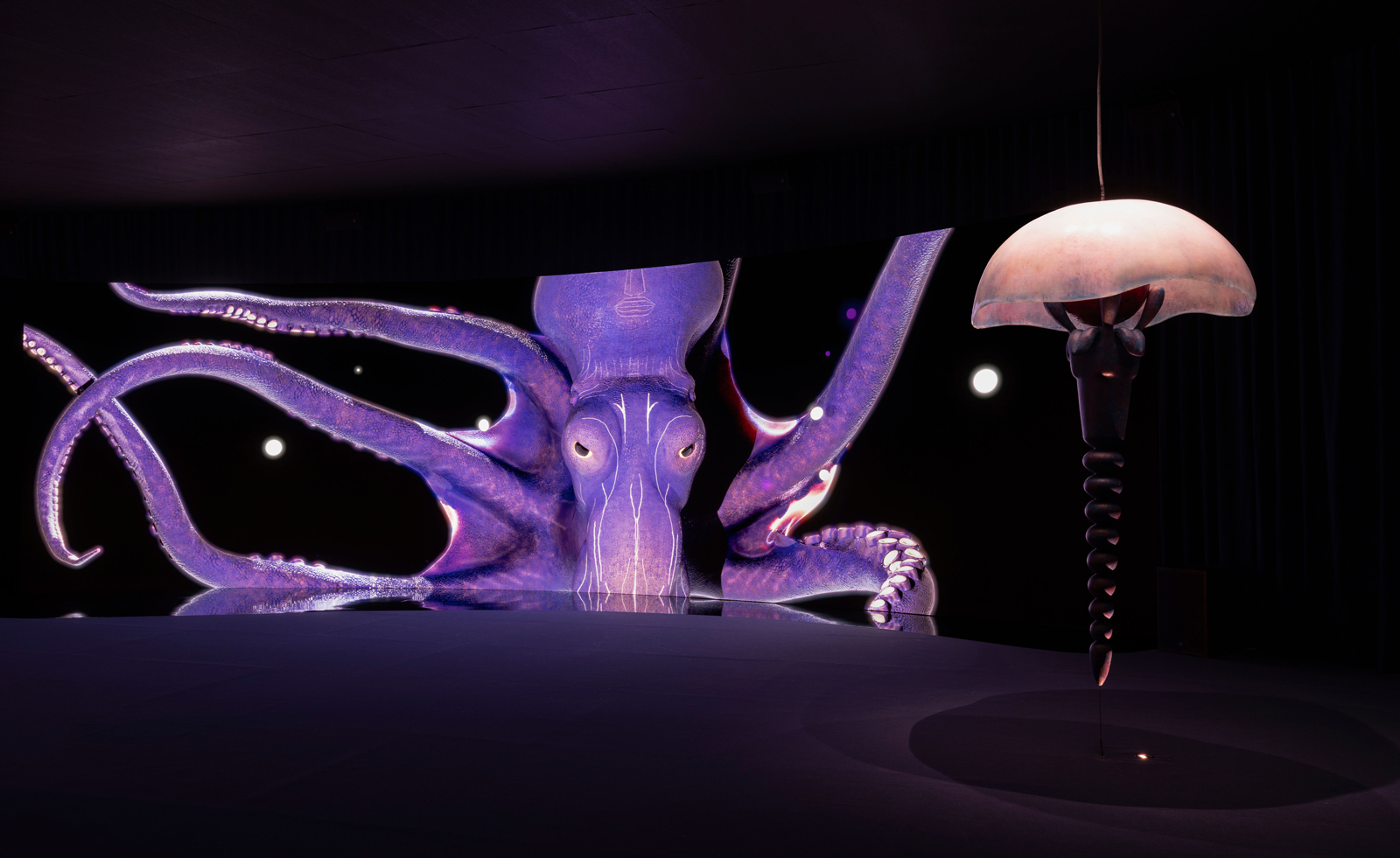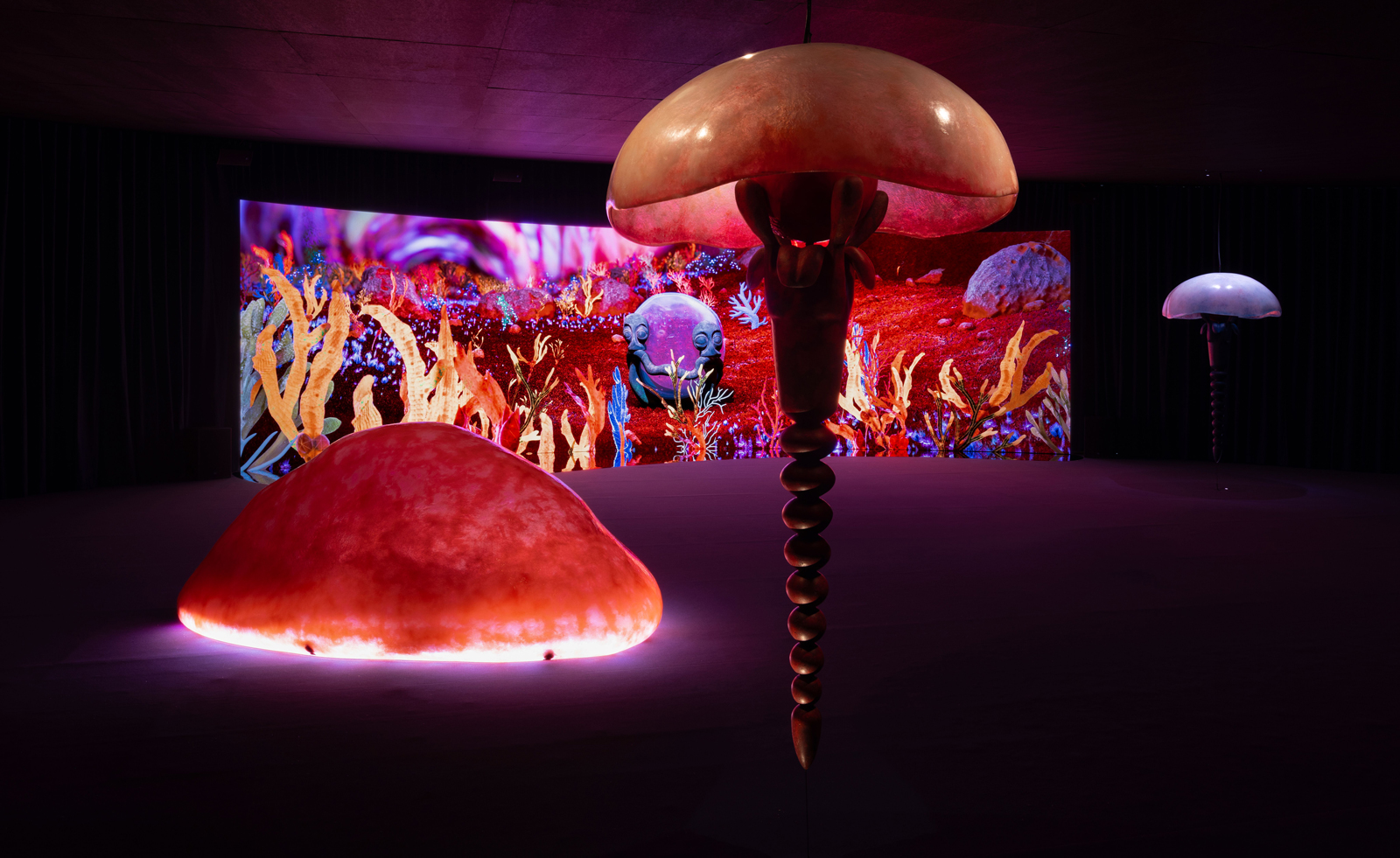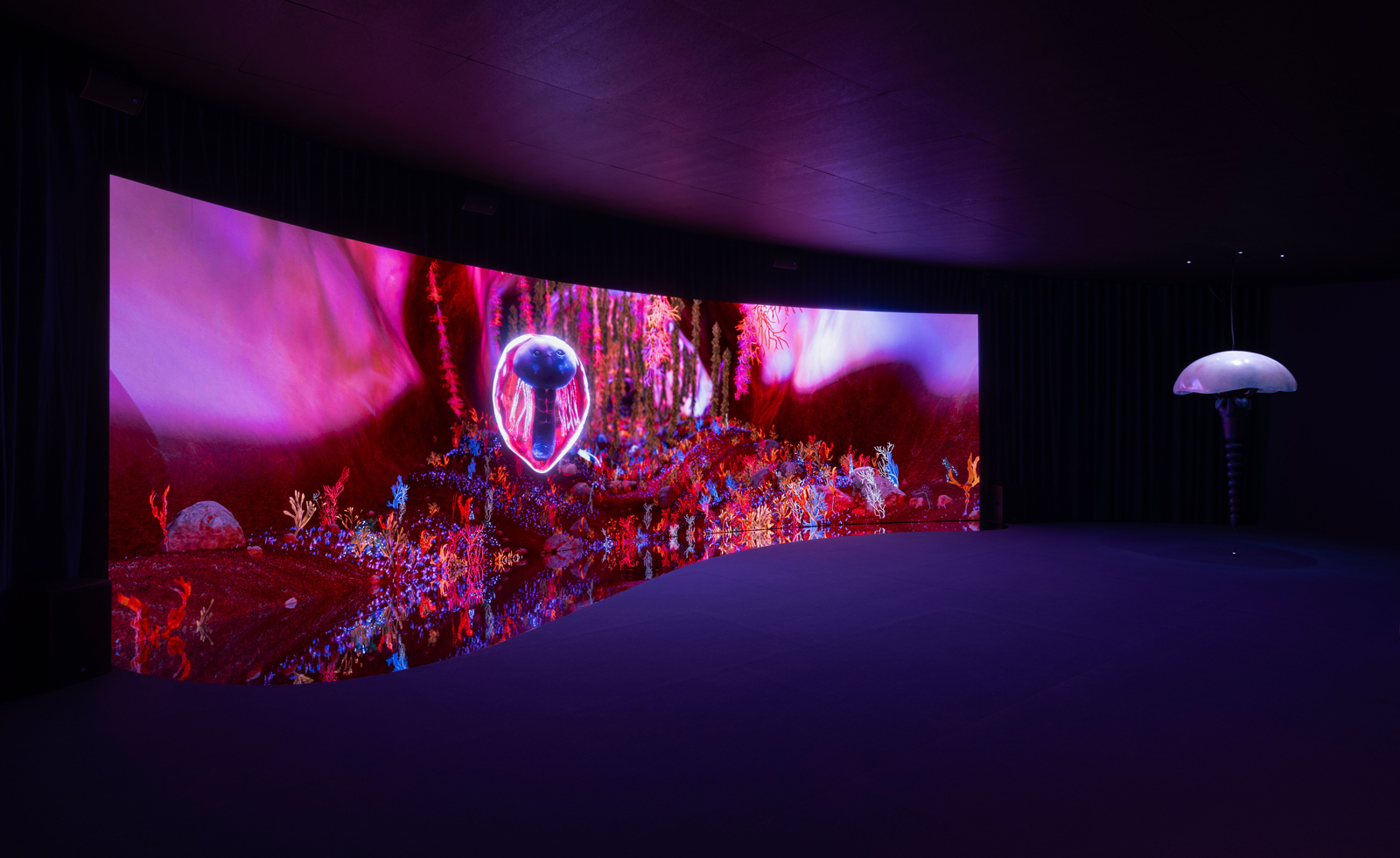
For Josèfa Ntjam, a utopian world becomes a surreal lens through which to consider themes of domination woven throughout history. It is a concept she has returned to for ‘swell of spæc(i)es’, a collateral event with LAS Art Foundation at the Venice Biennale 2024.
Ntjam, who recently showed a series of mythical sculptures following her LVMH Métiers d’Art residency, works across a mix of medias to bring her other world to life. In Venice, curving screens across the Palazzina Canonica unite 3D animation, AI and footage from aquariums, as well as animations of the life of Amma, a Dogon deity created by the stars, who lives among the Nommos, the first creatures to live underwater.
Here, Ntjam tells us how she brings her surreal worlds to life.
Josèfa Ntjam at the Venice Biennale 2024

Wallpaper*: In your work, science fiction has often been a lens through which to consider issues of gender, race and territory. What draws you to this often dystopian worldview?
Josèfa Ntjam: I consider science fiction to be a process that can help heal us in a way, and I think it’s important to use it as a tool to project ourselves, to link important histories that have been lost. It has always been present in my work, but also my life. My parents told me a lot of tales, and I watched a lot of movies. I really have the sense that in science fiction, you can blur and limit the categories that society imposes upon us.
Science fiction has been used by minorities – in the African diaspora, for example, it’s used by many artists. [Musician and composer] Sun Ra is one of the main references in my work – he used science fiction and Afrofuturism as a tool of freedom, of liberation. It gives you the strength to project yourself in another temporality, and for him, it was a kind of obligation to say that maybe as an African American community, we are not able to live in this world. We’re just surviving on Earth. So this is why we’ve needed to place or propose ourselves in outer space. And I love this analogy, and how it’s used or seen in this huge historical moment of Ancient Egypt. And while this link to science fiction and mythology brings us a lot of hope, it’s also a place of displacement. And everything with mythology is not that straightforward in terms of social structures; this is a super important part of this work.
W*: A strong narrative runs throughout your work – here, Amma’s story becomes all-encompassing. Tell us about how the story leads the work.
JN: For this project, and all of my projects, I work with a base narrative. I write a lot for my videos, but also for my performances. Poetry is, for me, a way of working, and through it, I create the landscapes and all of the interspecies characters. And then we arrive in another level of the work – it’s how I can integrate everything together. And for this project, I made a lot of crazy mind maps, because I had so many different landscapes and characters that I wanted to include, but at one point, I realised I had one missing element. And then I discovered this scientific fact about this limestone planet, and I thought maybe this is the missing link. At the end, the purpose was to have a kind of continuum, and the links are meant to be endless. Here the narrative is the base, but this is the first time in my life that I produced a motion-picture movie, and I didn’t write anything in terms of a script as I normally would. In this case, I designed the characters and the landscape first, and thought about the sensation that I wanted to produce. Everything started with plankton because I was fascinated by them – especially the way plankton sediment over time.

W*: Why does a multidisciplinary approach here feel like the natural one?
JN: I’ve always worked in this way, ever since my first year studying fine art. I also studied music and was in the conservatory since I was six years old, and I did theatre, so the multidisciplinary approach is part of my background.
I also love that when you enter a space, all your senses become totally aware. And [to create] a kind of journey through an exhibition – I try to build worlds. It’s like a video game – when you enter, you need to unlock so many different levels and layers. I think this immersive approach also applies to other art forms, such as writing, like the author Octavia E Butler, or paintings, even super-layered paintings like those by Hieronymus Bosch, where you have so many different immersive elements.
So here in my exhibition, you’re looking at these characters, these weird interspecies beings, and you’re like, what is that? But also, I love sound and music; it’s a big part of my work and collaboration with other artists. The sensation of sound and vibration and how it goes through our bodies is super important for my work.
W*: By juxtaposing footage with AI, myth, legend and history, reality is a blurred, perhaps irrelevant concept. How do you hold up this celebration of interspecies as a reflection of the domination that reigns in our own society?
JN: In the same way that I work with so many different materials, I also have a research practice. This is how I conceptualise Afrofuturism: as a practice of research, but also as a practice of collage. Collage has so many different elements, and putting them together brings a new kind of energy. I love that, because it’s also part of how I think about history, especially in terms of the stories and moments that are missing, which we need to dig for and find. So this is where mythology and science fiction arrive in the process of creation. My practice also involves photomontage to help create links between everything.
The interspecies characters have a precise role in my work. At the beginning, it was not about them at all, it was more about inter-landscapes and inter-spaces. This is why there is a sort of weird continuum in my work, where you’re in outer space, but also in the deep ocean – you never really know where you are. The interspecies characters are also important because they negate categorisation, you can’t put them in a specific box. It’s all about fluidity and finding ways of working against structures of domination and oppression. The more fluid everything is, the more it can escape the structures of domination, and everything can infiltrate everything else. The concept of infiltration is important to my work – like the way water can infiltrate different materials and cause decomposition, creating a new story from that process.

W*: The sonic sculptures are gorgeously ethereal beings. What did the practicalities involve of working with materials such as biosourced resin, and what appealed to you with these materials?
JN: Experimenting with these materials was important for me. Bioresin is really interesting because it’s all made up of vegetable and plant-based elements. I love this sense that the work, even down to the base materials, is connected to the concept and also to the narrative. As an artist, I’m trying to bring it all alive – its important to link the material to what we’re producing, and to push the boundaries of the research itself. I think this is priceless.
'Josèfa Ntjam: swell of spæc(i)es' will take place in the courtyard of the Accademia di Belle Arti di Venezia from 20 April - 24 November 2024







